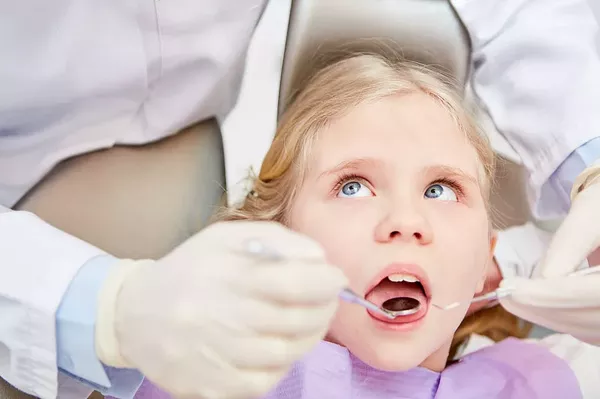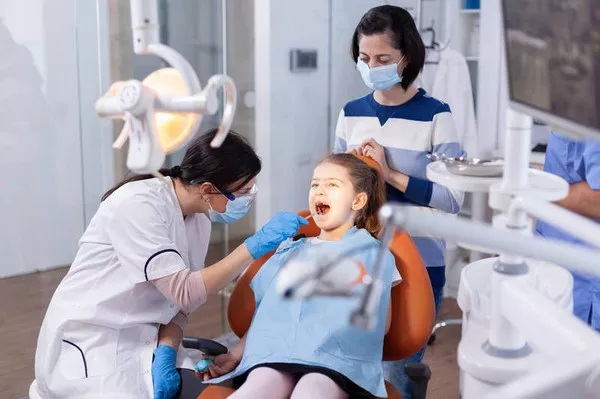When children enter first grade, the process of replacing the baby teeth with the permanent teeth begins. Then you can often see teeth that erupt twisted and crooked or not at all. Suddenly the child shows a crooked and untidy smile. Parents often complain: “Once the child’s teeth were perfect, the smile was wonderful, and now, with the arrival of permanent teeth, the smile looks terrible.” It is clear why this stage of changing teeth has been nicknamed the “ugly duckling stage.”
Since the permanent teeth are larger than the baby teeth, in many cases there is a discrepancy between the size of the permanent and baby teeth, and there is also a discrepancy in the size of the jaw. A permanent tooth is already formed in its final size. That is, during the growing-in process, it enters the oral cavity in its final size. The permanent teeth are supposed to serve us all our lives, so their size fits the proportions of an adult’s face.
For example, upper incisors erupt at the age of eight or nine, at a stage when the face is childlike and the jaw is relatively small, but the teeth are already the full size of an adult. This mismatch creates an uneven and sometimes unaesthetic appearance during the eruption and growth process, but it can be resolved at the same time as the growth processes.
Why do teeth erupt crookedly?
“The development of the jaws and the eruption of the teeth are affected by different habits. Sucking a finger or a pacifier results in the activation of a strong and prolonged suction force, which later interferes with the process of growth and expansion of the upper jaw. As a result, there is a narrowing of the upper jaw in relation to the lower, which can cause facial asymmetry, severe crowding of the teeth and protrusion of the upper teeth.
“The goal is for such harmful habits to stop by the age of 3 or 4, in order to allow for the proper development of the jaws. If there is a disturbance in the development of the jaw, we will recommend intervention at a young age, even if most of the teeth are still falling out. Preventing harmful habits and orthodontic treatment at the age of 8-9 will allow a relatively easy solution and avoid the need for complex treatment at a later age.
Parents often complain that ‘Once the child’s teeth were perfect, the smile was wonderful, and now, with the arrival of permanent teeth, the smile looks terrible’ It is clear why this stage of changing teeth has been nicknamed the ‘ugly duckling stage
What other factors might interfere with the process?
“Children who suffer from breathing difficulties, airway obstruction, allergies or enlarged tonsils tend to breathe through the mouth, and this is another factor that can affect the development of the jaws and the eruption of the teeth. Mouth breathing can cause narrowing of the upper jaw, protrusion of the upper teeth and improper closing.
It is important to identify these conditions at a young age, to treat the problem and to allow normal growth of the chewing system. The sooner these conditions are treated, the normal growth process will be possible and the need for complex treatments will be avoided.
“The pattern of speaking and swallowing also affects the development of the jaws. In situations of tongue thrust there is a disturbance to the process, the dentition is spaced in many cases, and the upper teeth are prominent. These situations will require not only orthodontic intervention but also the accompaniment of a speech therapist in order to improve the functional patterns of the tongue. Therefore, there is an advantage in early recognition and practicing the position of the tongue from a young age.”
Relate Topics:
































